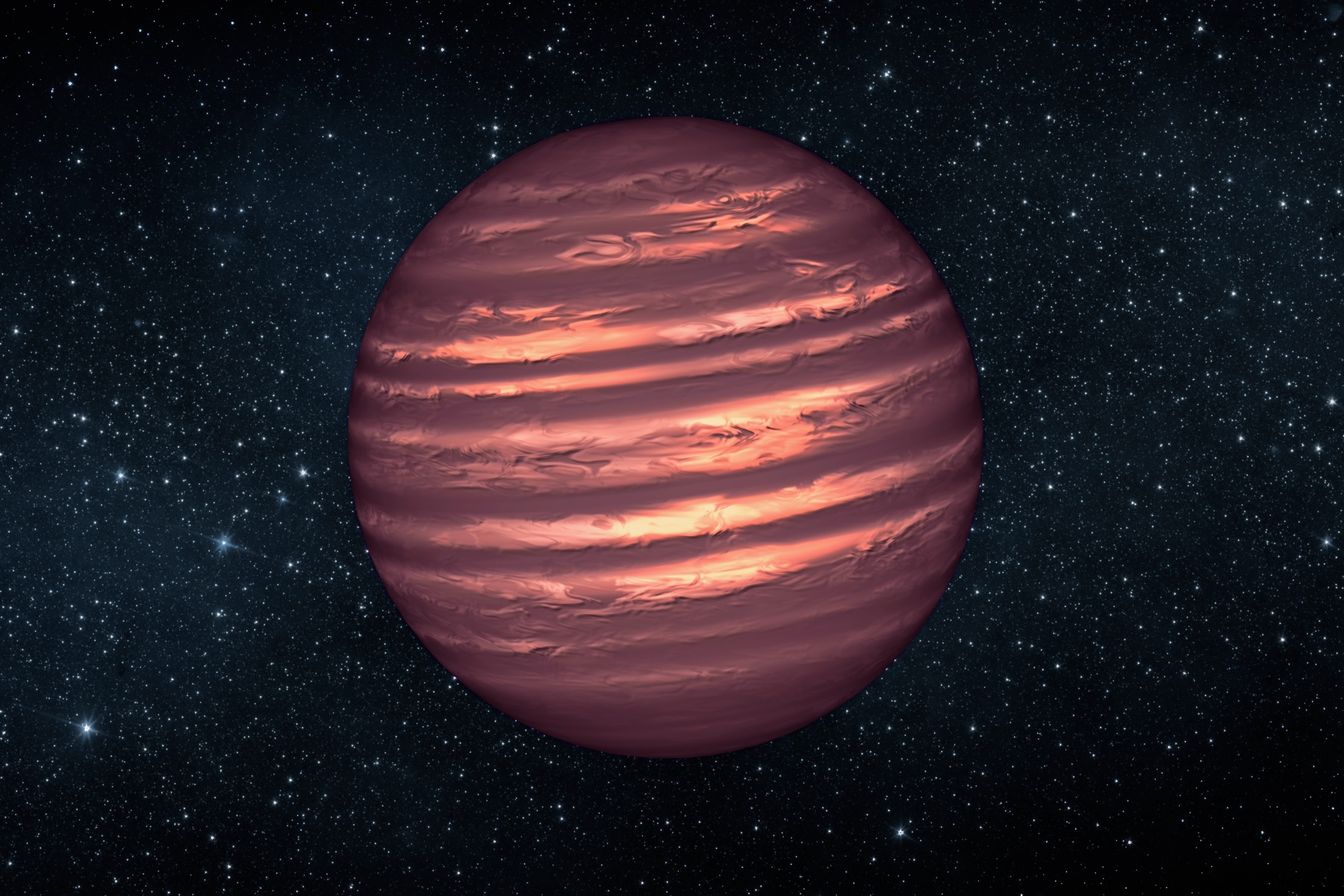- About▼
- Exo 101▼
- News
- Research▼
- Jobs + Internships▼
- Public Outreach▼
- Our Team▼
- Contact Us
- FR▼

While scientists like to categorise the objects they study, the Universe does not necessarily follow these rules. Many objects of interest to exoplanet researchers thus fall outside the typical definitions of stars or planets. They remain essential in our quest to understanding how planetary and stellar systems work.

A direct image of the brown dwarf 2M1207A (left) and its visible exoplanet using a coronagraph (right). (Credit: NASA/ESA/Y. Zhou)
How small can a star be? If we could add gas to a large planet, at what point would it ignite and turn into a star? Is there even a distinct boundary between the two categories? These are the questions that led to the prediction and discovery of brown dwarfs, which occupy the grey area between a planet and a star.
The main definition of a star is that it is massive enough to produce energy and shine brightly. With lots of mass squeezing the core, the temperatures get high enough to smash small atoms together to create larger ones, a process called nuclear fusion. For most of a star’s life, it fuses hydrogen atoms together, creating helium and producing energy. This keeps the temperatures hot and allows fusion to continue until the hydrogen runs out. The more massive a star, the hotter its core, and the easier and faster it fuses hydrogen.
By this definition, the smallest a star could be is the lowest mass where hydrogen fusion is still possible. This occurs at about 80 times the mass of Jupiter, or about 8% the mass of our Sun. Below this mass, only some limited fusion is possible using a rare form of hydrogen called deuterium (a sort of “heavy” hydrogen with an extra neutron). This is the regime of brown dwarfs, between 13 and 80 Jupiter masses. Below this point, even deuterium fusion ceases, and we would call the object a planet.
Brown dwarf science saw an explosion of progress in the last few decades, largely due to the improvement of infrared detector technology (because brown dwarfs emit mostly infrared light). These objects are great candidates for direct imaging, both for themselves and potential exoplanet or stellar companions.
Not all planets live a cozy life orbiting around a star. Researchers have found some planets that live in almost complete darkness, drifting between stars. But are such lonely objects really even planets at all? How can we describe and categorise them?
Rogue planets, sometimes called free-floating planets, are planet-like objects that aren’t gravitationally bound to any star. The most straightforward method to find them is to directly search for faint reddish objects in nearby young star clusters. We do this for two reasons:
With this method, hundreds of rogue planet candidates can be discovered at once.
A stranger way of finding rogue (and regular) planets is by gravitational microlensing. This happens when a rogue planet passes almost directly in front of a background star, and the star’s light rays are bent by the planet’s gravity which acts similar to a magnifying glass or lens. The distortion and magnification seen in the background star can tell us about the planet that is “lensing” it. This is a useful technique for studying dark objects like rogue planets and black holes.
There are several theories about how these free-floating planets come to be:
We don’t really know which of these methods is the dominant process to create rogue planets. It may be a mix of these processes, or something else altogether.
Plusieurs chercheurs et leurs étudiants à l’iREx mènent des projets de recherche sur les naines brunes et les planètes errantes. To learn more, we invite you to read their profiles:
You must be logged in to post a comment.